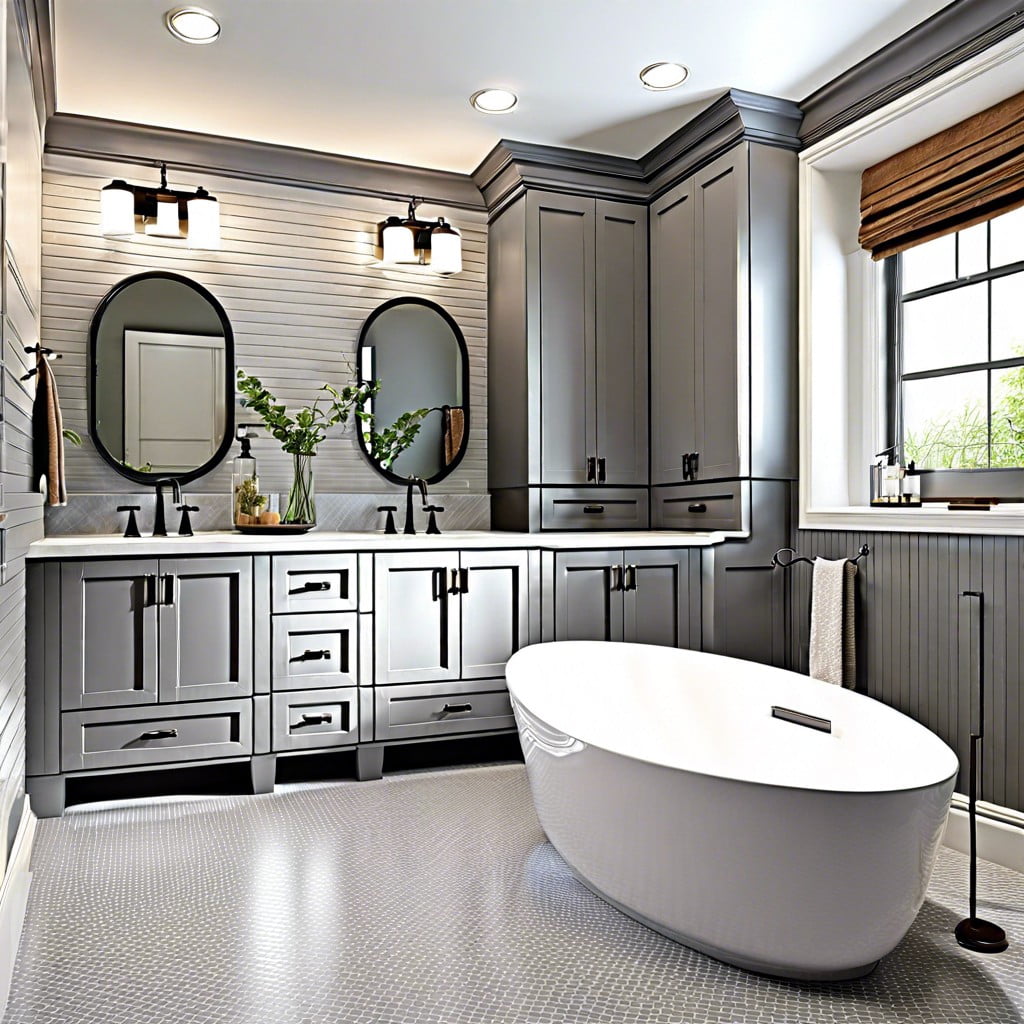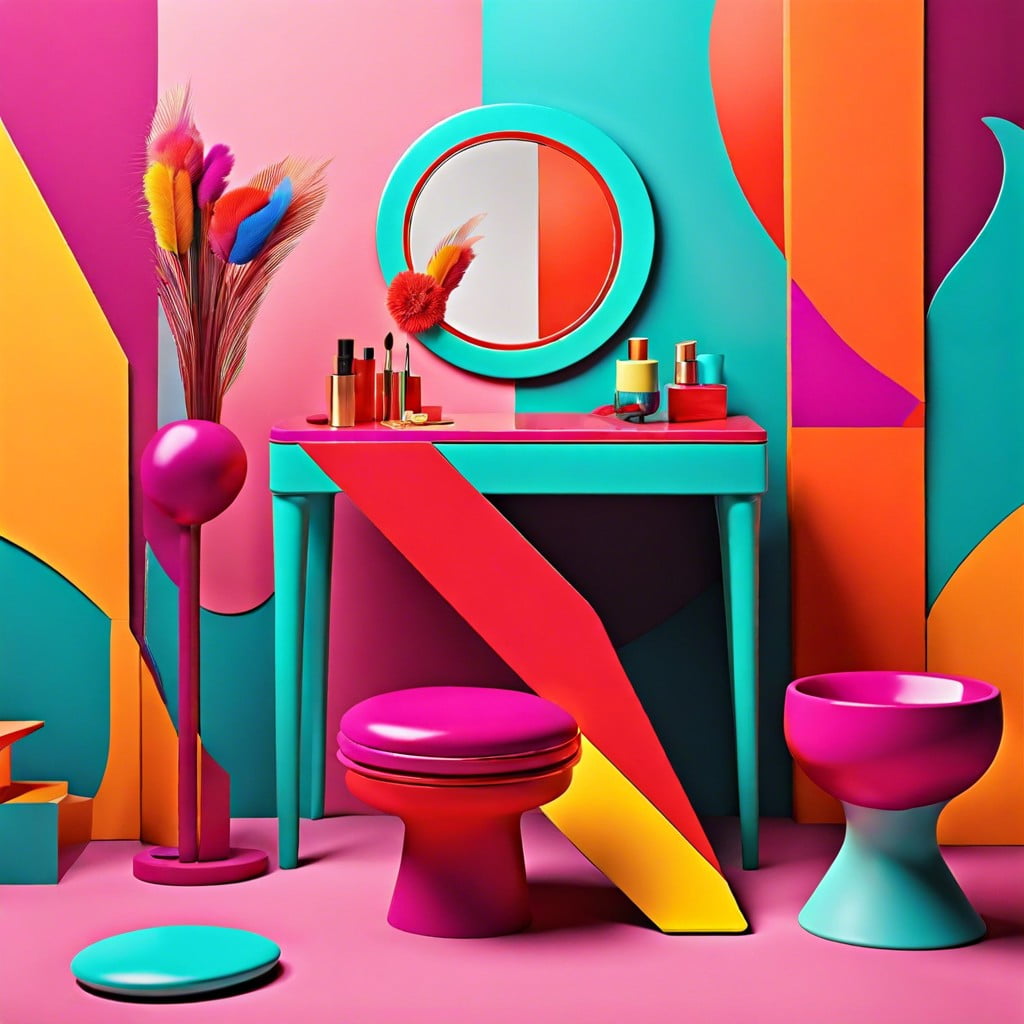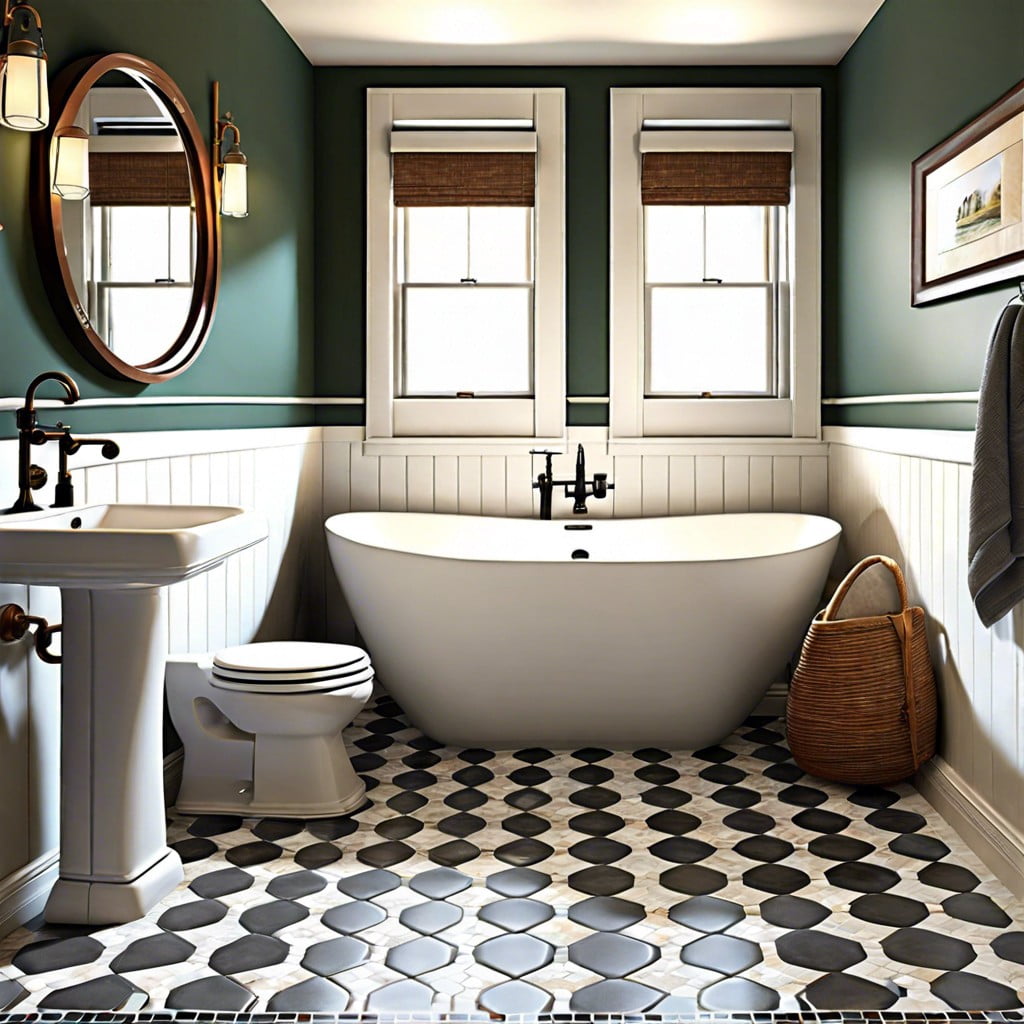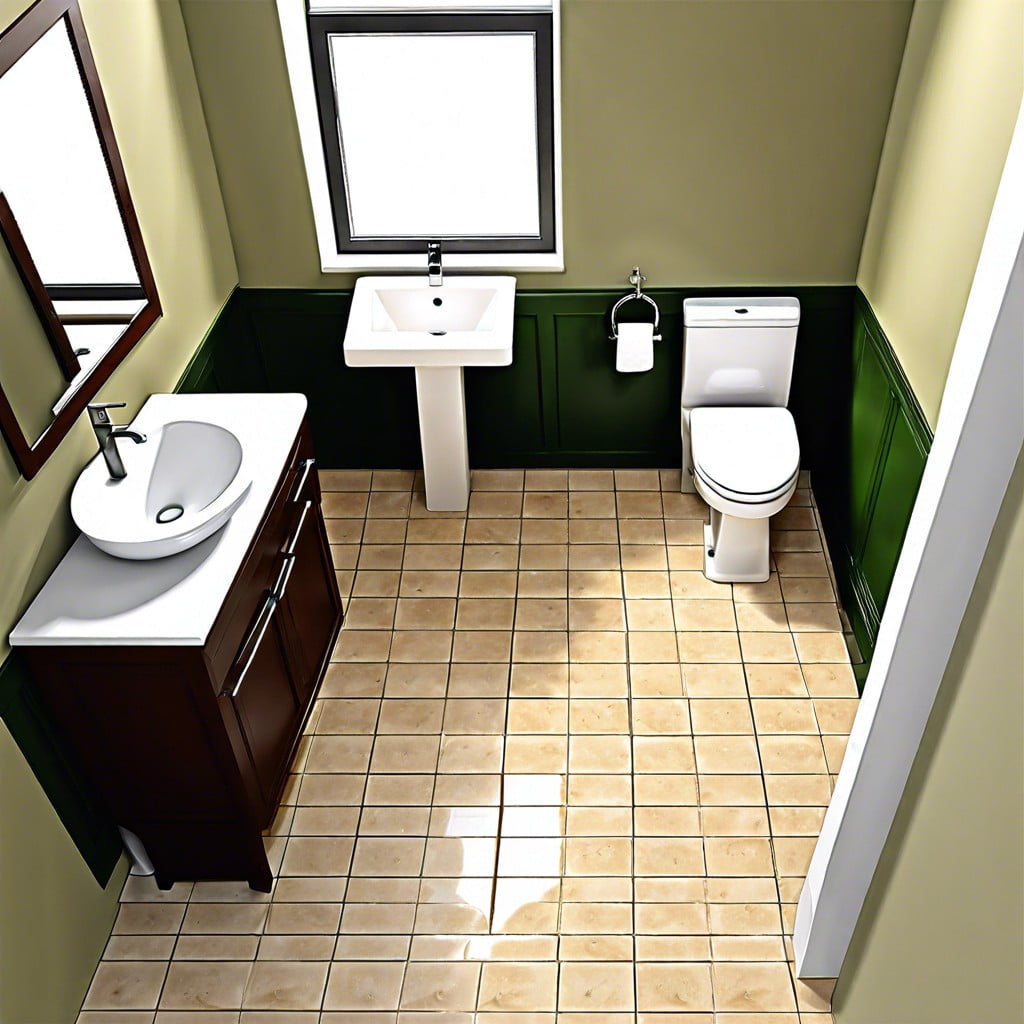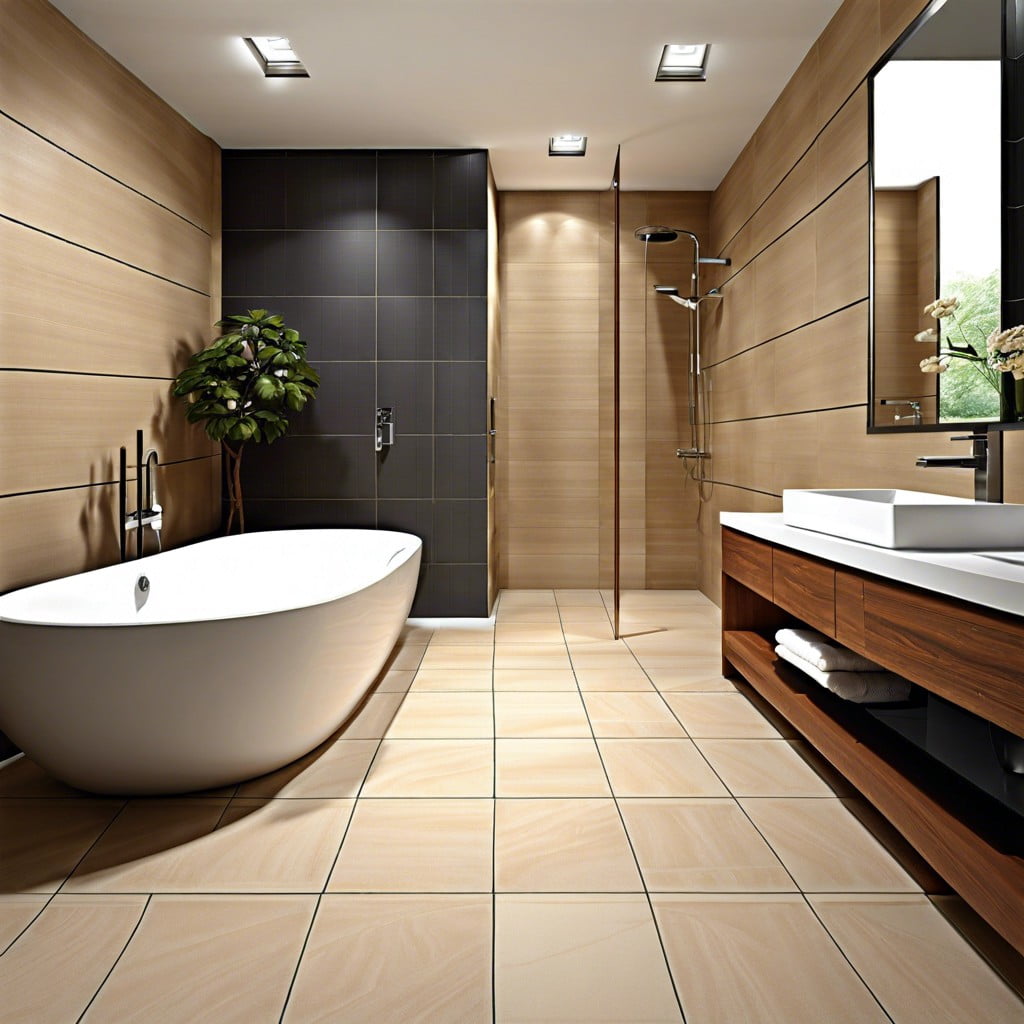Last updated on
Explore the world of cultured marble showers as we dissect their beauty and practicality, however, do not disregard the potential problems, because a well-informed decision is always the best approach.
Key takeaways:
- Scratches and surface cuts require careful handling and gentle cleaners.
- Staining and discoloration can occur from harsh chemicals and products.
- Repairs may require professional assistance and can be challenging.
- Limited design options compared to natural stone.
- Susceptible to heat damage and chemical sensitivity.
Scratches and Surface Cuts
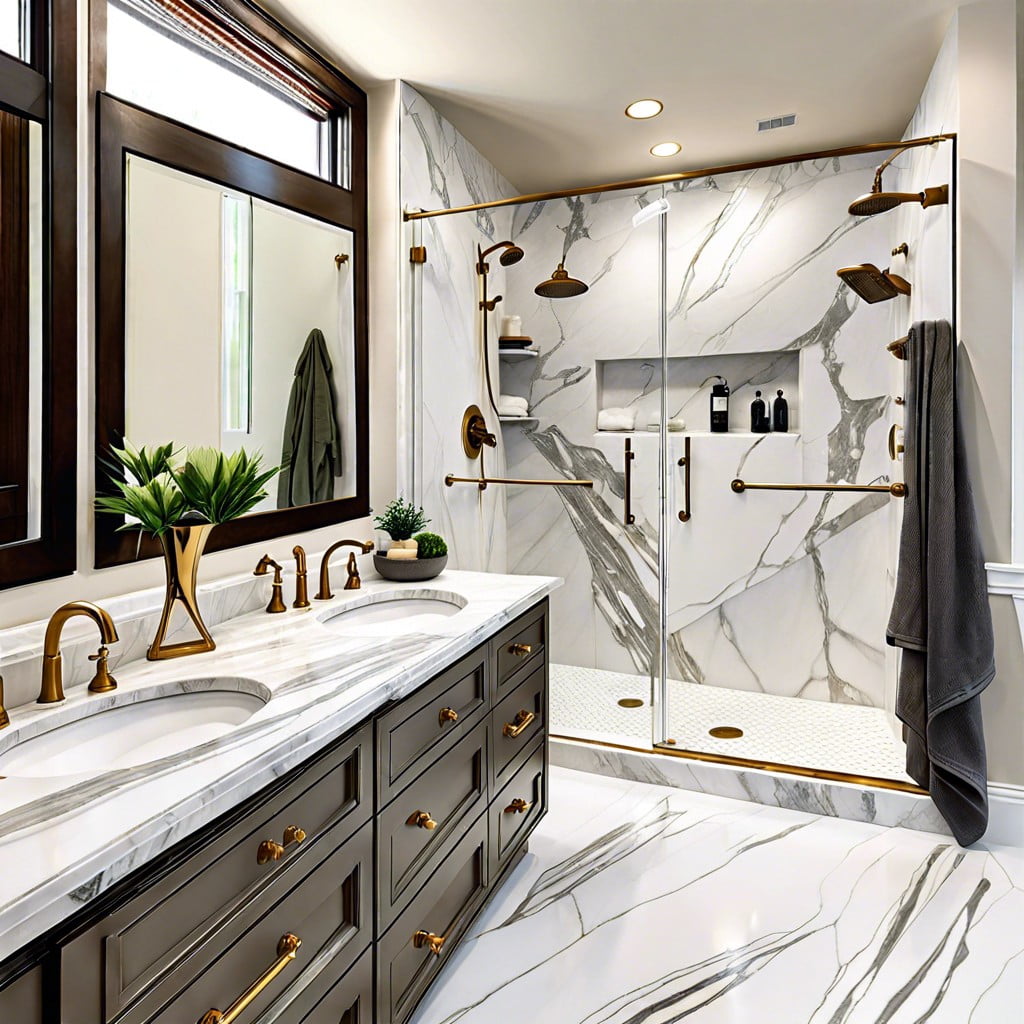
Despite its durability, one of the first signs of wear in cultured marble is the appearance of scratches and minor cuts. These imperfections can happen when abrasive materials or sharp objects come into contact with the surface. To keep your shower looking pristine, it’s recommended to use gentle, non-abrasive cleaners and to avoid dropping heavy items that might cause damage.
For small scratches, a light buffing with a fine abrasive polish can sometimes restore the surface to its original luster. Regular careful handling and cleaning will extend the life and beauty of your cultured marble shower.
Staining and Discoloration
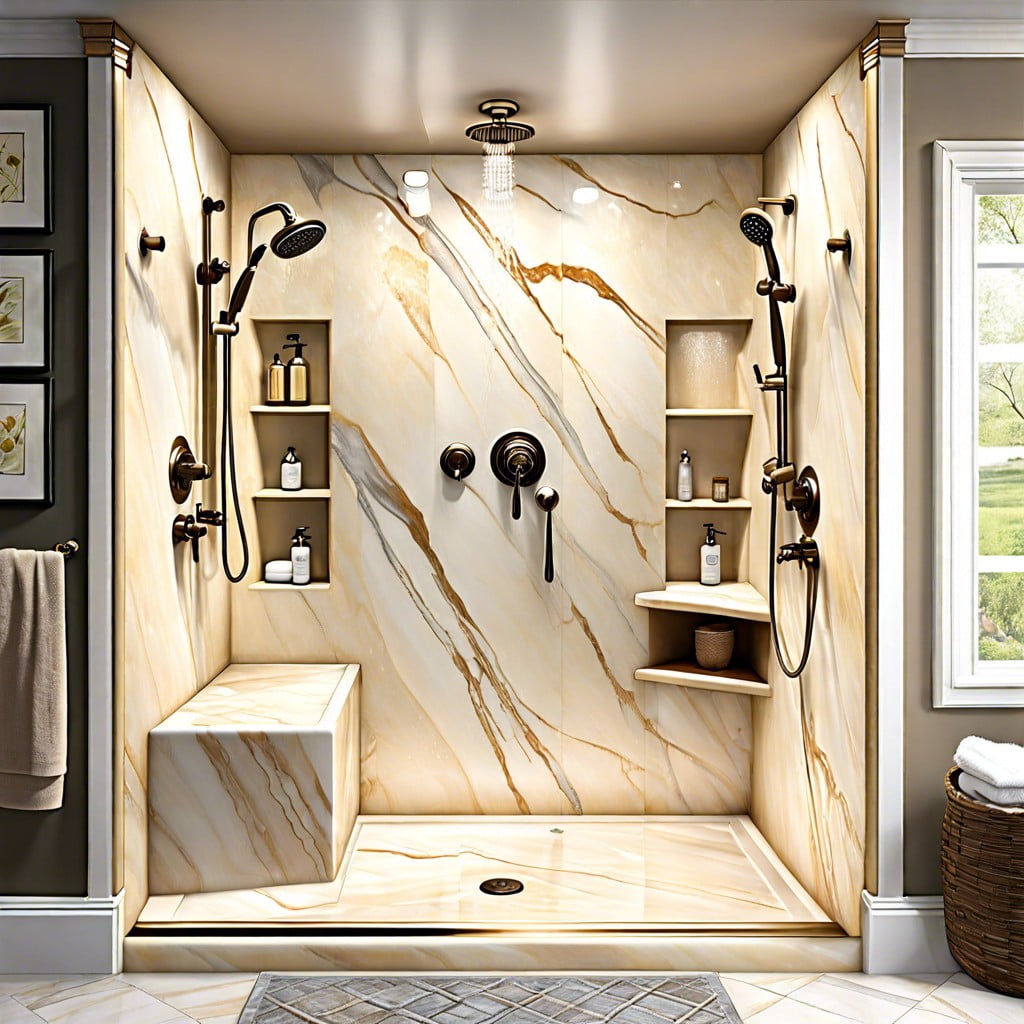
Cultured marble, while beautifully mimicking the elegance of natural stone, does have its vulnerabilities – including its susceptibility to stains. Unlike its natural counterpart, which is porous and requires sealing, cultured marble has a gel coating that offers some stain resistance. However, this coating isn’t foolproof. Harsh chemicals, dyes, and even certain hair and beauty products can breach its defenses, leading to unsightly blemishes.
Constant vigilance is essential; immediate cleaning is recommended upon spillage to prevent any lasting marks. Utilize gentle, non-abrasive cleaners specifically designed for cultured marble to keep the surface in pristine condition. Regular light cleaning rather than aggressive scrubbing is key, ensuring the longevity and luster of your shower’s surface.
Repairs and Maintenance Challenges
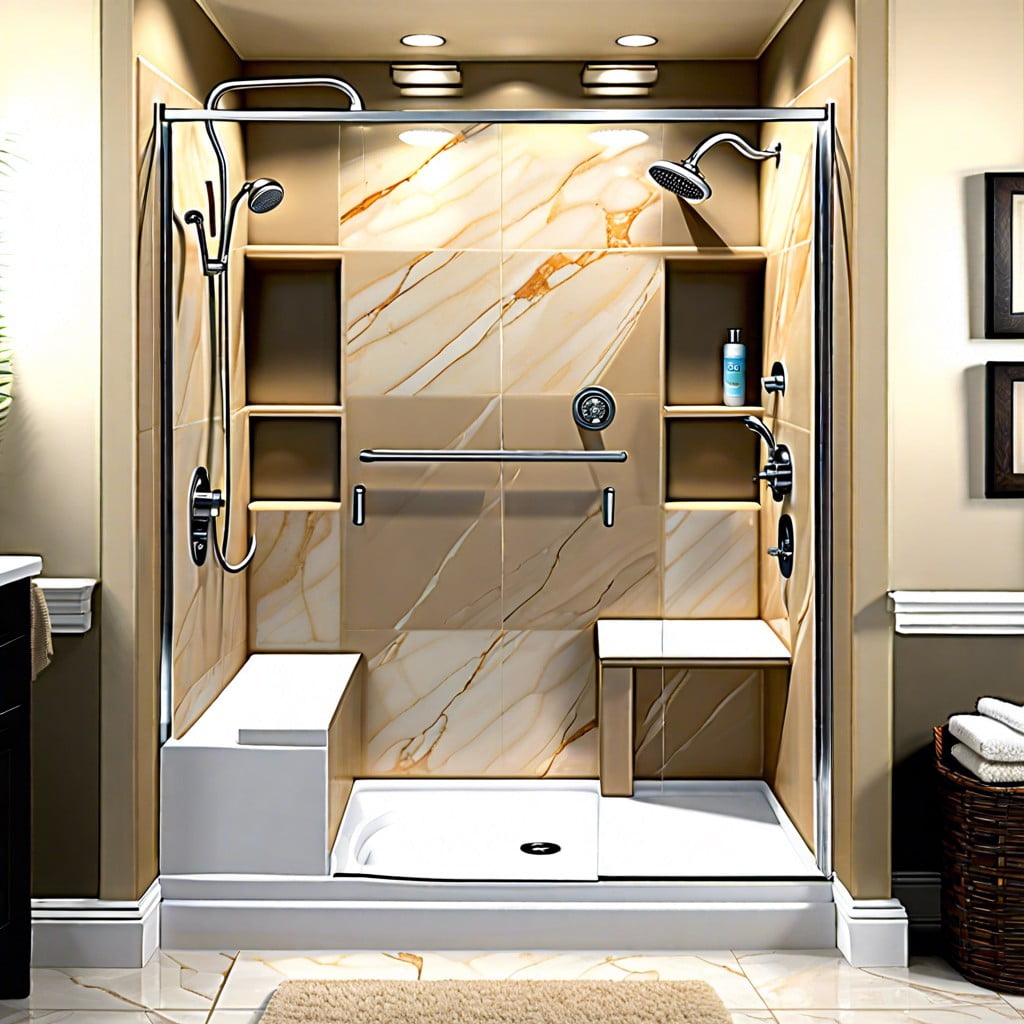
Caring for cultured marble involves routine cleaning with non-abrasive materials, yet despite best efforts, it can develop issues that are tough to mend. Unlike natural marble, which can be sanded and resealed, cultured marble is coated with a gel that can be damaged by sanding. Hence, scratches and chips are not as easily remedied.
Professional repair is often needed for deep scratches or significant damages, as DIY repair kits may not perfectly match the color and pattern of your shower, leading to uneven aesthetics. Additionally, burn marks from heated styling tools or accidental heat exposure might require resurfacing by a professional.
For longevity, avoid harsh chemicals and scrubbing pads. Stick to mild detergents and soft cloths to maintain your shower’s luster. It’s worth noting, with good upkeep, cultured marble can remain a reliable and attractive feature for years.
Limited Design and Finish Options
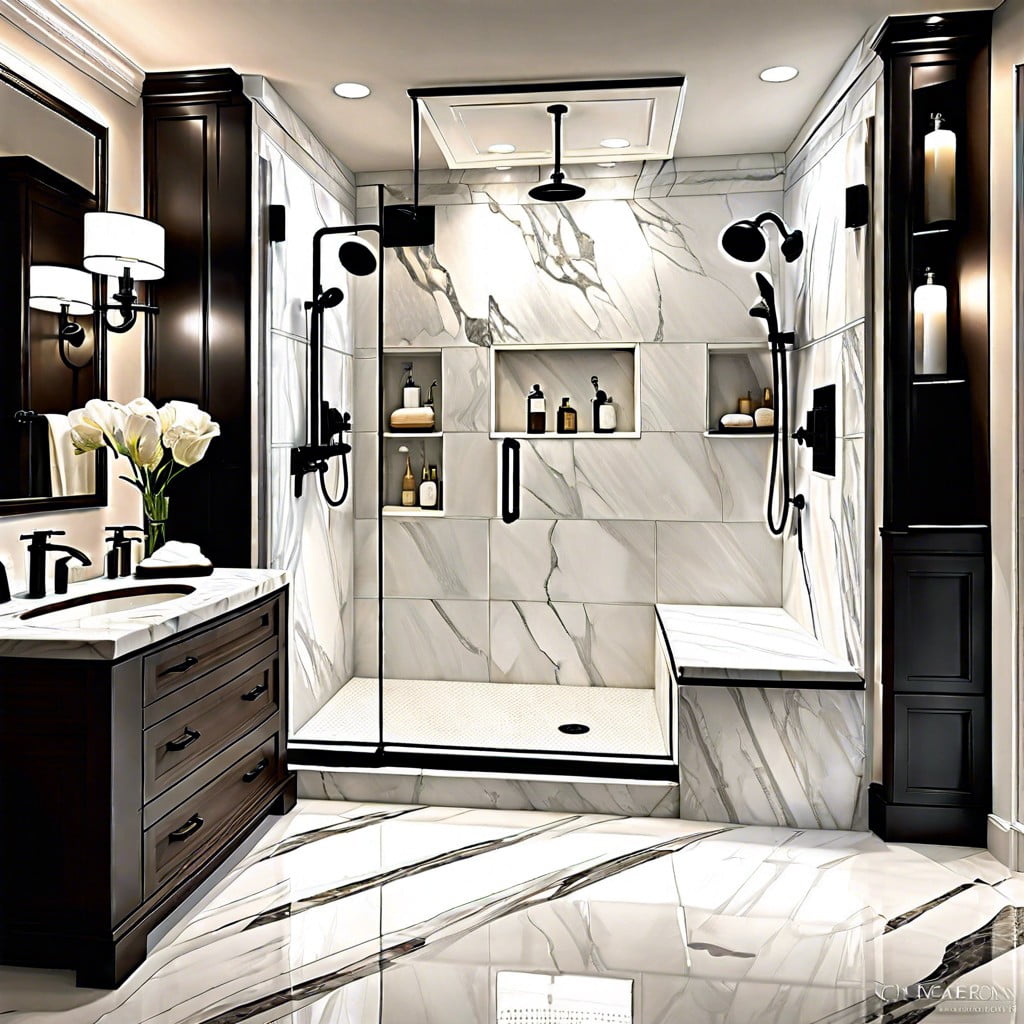
Cultured marble showers may not cater to all aesthetic preferences due to a relatively narrow spectrum of style choices. They primarily mimic the look of genuine marble but fall short in offering the diverse range of patterns and color variations found in natural stone.
While they can be produced in a variety of solid colors, the speckles and veining are often uniform and lack the unique, intricate details seen in quarried marble. This can be limiting for homeowners seeking a custom or high-end design that stands out.
Additionally, the glossy finish commonly associated with cultured marble isn’t suitable for all design schemes, especially those that require a more matte or textured appearance.
Heat Damage Susceptibility
Cultured marble might look stunning, but it doesn’t take well to high temperatures. This can be particularly relevant in showers, where hot tools like straighteners might inadvertently be left on the surface. The heat can cause warping, burn marks, and even cracking.
To maintain its pristine condition, always use a heat-resistant barrier like a trivet when placing hot items on cultured marble surfaces. Additionally, steer clear of direct sunlight for prolonged periods, as this too can amplify the risk of heat damage and lead to a dulled appearance over time.
Chemical Sensitivity
Cultured marble, while known for its durability, is not impervious to damage from certain chemicals. It’s essential to take care when selecting cleaning agents. Avoid harsh substances like abrasive cleaners, acidic or alkaline solutions which can etch the surface, leading to dullness and loss of luster.
Instead, opt for mild, non-abrasive soaps and cleaners specifically formulated for marble. Always rinse thoroughly with water and dry with a soft cloth to prevent spots and build-up. For routine maintenance, a mixture of water and gentle dish soap is a safe and effective choice. Remember, the longevity of your cultured marble shower largely hinges on the care you give it.
Yellowing With Age
Over time, the sleek appearance of cultured marble can be compromised as the material may develop a yellow hue. This discoloration can be attributed to the resin component in cultured marble which reacts to light and heat exposure, leading to a change in color.
The yellowing process is gradual and can be exacerbated by constant exposure to sunlight or harsh lighting.
Frequent use of harsh chemicals for cleaning can strip away the protective gel coating, accelerating the yellowing effect.
Bathroom products, like dyes and colored liquids, if spilled and not cleaned promptly, can contribute to the staining and overall discoloration.
To mitigate this issue, it is advisable to use mild cleaners and maintain a regular cleaning routine, being careful to wipe up any spills quickly.
If your shower is in direct line of natural light, consider applying UV-protective film to windows or utilizing window treatments to minimize sun exposure.
Support and Installation Difficulties
Cultured marble is heavier than some shower materials, which means it requires a sturdy backing and proper support during installation. Without this, the material can flex and lead to cracking. Professional installation is often recommended, as DIY attempts can result in improper sealing, leading to water damage over time.
Additionally, due to its weight, transportation and handling of cultured marble panels must be done with care to prevent chipping or breakage before the product even reaches your bathroom.
Pros of Cultured Marble Showers
Cultured marble showers offer a seamless, sleek design that enhances any bathroom aesthetic. Their non-porous nature makes them relatively easy to clean and resistant to mildew or mold growth.
This material is typically more affordable than natural stone, providing a luxurious look without the hefty price tag. Additionally, installation is generally quicker and less complicated, as cultured marble is lightweight and can be easily molded into a variety of shapes and sizes.
With proper care, a cultured marble shower can retain its elegant appearance for years, making it a practical and stylish choice for a bathroom upgrade.
Cons of Cultured Marble Showers
Despite their popularity, there are certain downsides to cultured marble showers that homeowners should be aware of:
- Durability may not match that of natural stone, potentially leading to quicker wear and tear.
- Susceptibility to scratches means extra care is needed to maintain the finish.
- Staining can occur when exposed to certain chemicals or colored products, requiring immediate cleanup to prevent lasting marks.
- Cultured marble can yellow over time due to exposure to light or certain cleaning products, affecting the aesthetic appeal.
- Heat can damage the surface, so it’s advised to avoid direct contact with hot objects like hair styling tools.
- The material’s sensitivity to harsh chemicals necessitates the use of gentle, non-abrasive cleaners.
- Repairing cultured marble can be more complex compared to other materials, sometimes necessitating professional assistance.
Selecting cultured marble for a shower requires weighing these cons against its benefits to determine the best fit for your lifestyle and bathroom design.
FAQ
How long does cultured marble last in a shower?
Cultured marble typically has a lifespan of around 20 years when used in a shower.
Is cultured marble a good choice for a shower?
Yes, cultured marble is a fantastic choice for a shower due to its low maintenance and easy-to-clean properties.
What is a drawback of cultured marble?
A drawback of cultured marble is its slightly porous nature, which increases its susceptibility to staining.
What are the problems with cultured marble showers?
The primary issue with cultured marble showers is that the seams can leak, leading to water infiltrating walls and floors, potentially causing mold, mildew, rot, and insect damage.
How can one maintain the shine on a cultured marble shower?
To maintain the shine on a cultured marble shower, regularly clean it with a non-abrasive, mild detergent and buff it softly with a chamois cloth.
What are effective solutions for repairing damage in cultured marble showers?
Effective solutions for repairing damage in cultured marble showers include using a gel-coat repair kit or epoxy resin.
Can a cultured marble shower be repainted or refinished?
Yes, a cultured marble shower can be repainted or refinished to rejuvenate its appearance.
Recap
